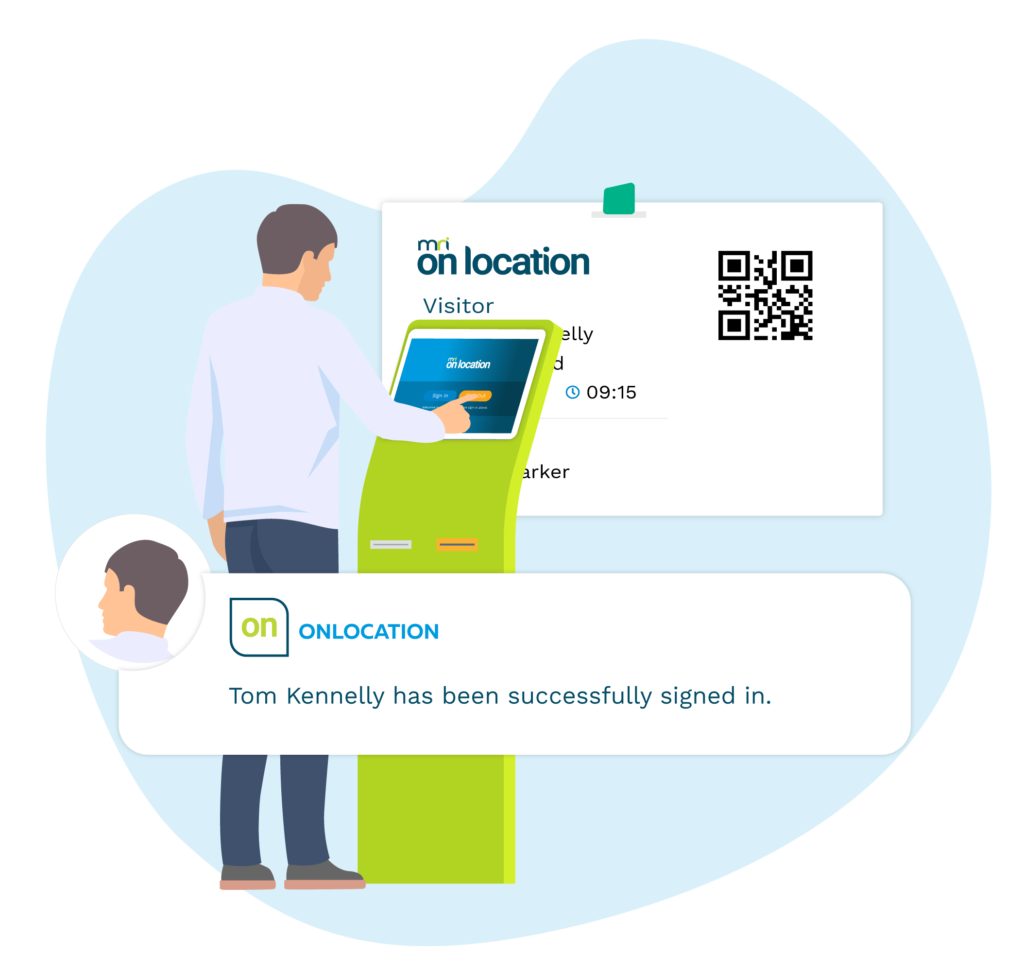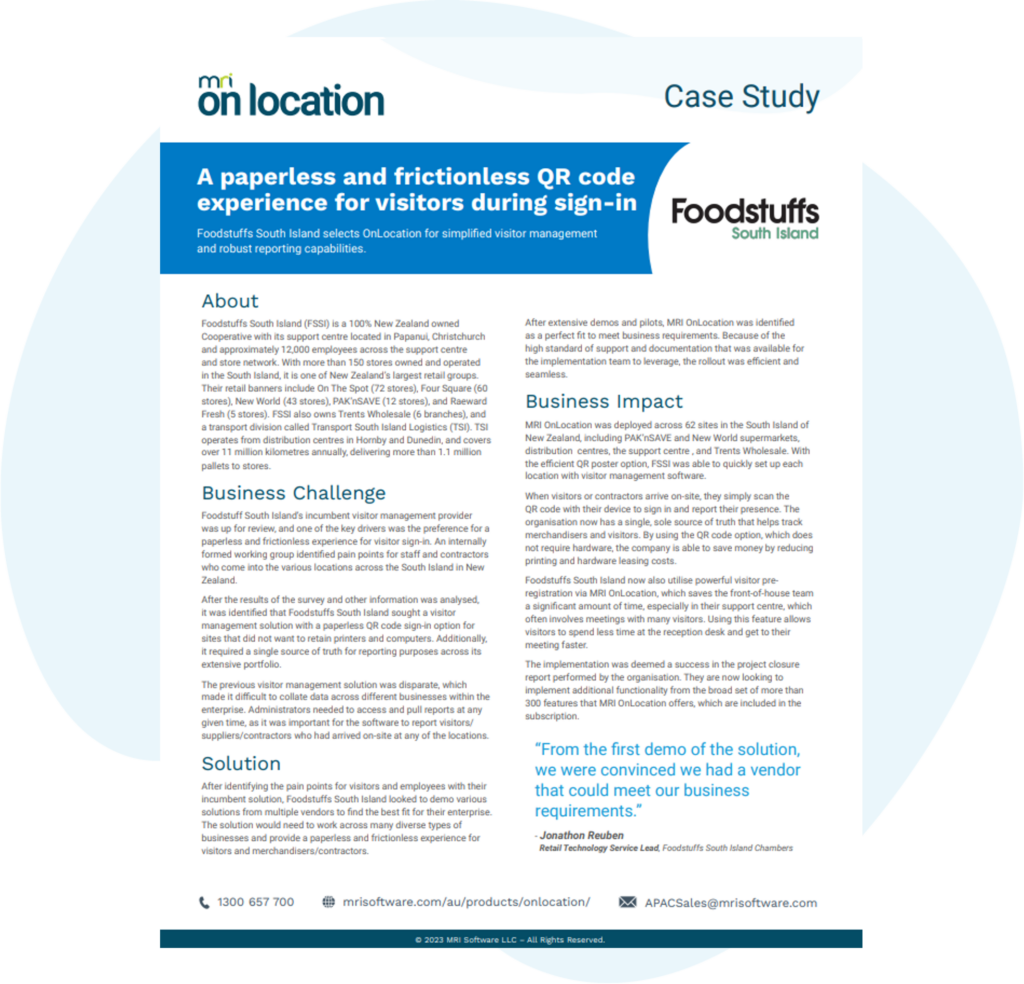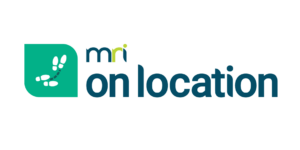Gaining insights from people counting: Strategies for data-driven decisions
People counting systems give you the power to understand how individuals move through spaces and make smarter business decisions. These systems aren’t just about counting heads, they’re about uncovering trends, optimising operations, and improving customer experiences. With the right technology, you can gain the data-driven insights needed to stay ahead in a competitive market.
Get the visitor management software brochure
Screen, track and report on all site visitors.

Table of contents:
- Understanding people counting systems
- How different types of people counting sensors work
- Key data insights from people counters
- People counting systems for different use cases
- Considerations for choosing a people counting software
- FAQs
Understanding people counting systems
A people counter system tracks how many individuals enter, exit, or move through specific spaces. It uses advanced technology to gather real-time data, which can be analysed to improve efficiency, ensure safety, and enhance customer or tenant experiences. From retail stores to office buildings, these systems are transforming how businesses operate.
For example, property landlords can use people counting software to track tenant foot traffic in shared spaces like gyms or lobbies. This data helps them make decisions about resource allocation and space optimisation without the guesswork. Ultimately, these counting systems provide actionable insights that create smarter, more efficient operations.
How different types of people counting sensors work
People counting sensors come in a variety of forms, each designed for specific purposes. Whether you need basic traffic counts or detailed behavioral analytics, choosing the right sensor can make all the difference. Let’s take a closer look at the different types of sensors and how they work.
Infrared sensors
Infrared sensors are among the simplest and most cost-effective options for counting people. They use beams to detect when someone crosses a designated line, making them ideal for doorways and entrances. These sensors work in almost any lighting condition and are often used in libraries, small retail stores, or museums.
However, while they’re great for counting traffic, they won’t provide deeper insights like how long someone stays in a space. Think of them as the dependable basics—perfect if you only need to track entry and exit counts.
Thermal imaging sensors
Thermal imaging sensors detect the heat signatures of individuals, making them reliable in low-light or complex environments. For example, hospitals use these sensors to ensure occupancy limits are maintained in waiting rooms while still preserving patient privacy. They are also effective for outdoor venues or areas with reflective surfaces.
While these sensors are excellent for tracking numbers, they’re less suited for detailed behavioral data, like identifying high-traffic zones. Their strength lies in providing accurate counts while maintaining privacy and regulatory compliance.
Video-based sensors
Video-based sensors use cameras to collect detailed information, including foot traffic, dwell times, and even movement patterns. For example, retail stores can use these sensors to create heat maps of customer activity and adjust product placement in real time. They’re also a great option for malls, airports, and other large spaces where granular data is key.
These sensors often leverage existing surveillance cameras, reducing installation costs. While highly accurate, they do require careful placement and proper lighting to ensure reliable data collection.
Key data insights from people counters
People counters offer a wealth of information that goes far beyond basic foot traffic numbers. By analysing this data, you can uncover actionable insights that help you improve operations and make informed decisions. Here are some key insights you could gain:
- Identify peak times: Know when your space is busiest to adjust staffing or allocate resources more effectively.
- Monitor staffing needs: Avoid overstaffing or understaffing by aligning employee schedules with traffic patterns.
- Measure campaign success: Retailers can track how foot traffic changes after launching a new promotion.
- Understand flow patterns: See how people move through a space, helping you optimise layouts and reduce congestion.
- Plan for future trends: Use historical data to forecast seasonal or event-based spikes in traffic and prepare resources accordingly.
- Enhance safety and compliance: Ensure adherence to capacity limits in public or commercial spaces.
For example, a coworking space might discover that its meeting rooms are underutilised on Mondays. With this data, they could offer Monday-only discounts to drive more bookings.
People counting systems for different use cases
These counting systems adapt to a variety of industries. This means they offer tailored people counting solutions for unique challenges. From retail stores to public spaces, their applications are as diverse as the industries they serve.
Retail stores and shopping malls
Retailers use people counting software to monitor foot traffic and measure conversion rates. For instance, a clothing store can track how many shoppers enter during a seasonal sale and compare that to actual purchases. This helps evaluate marketing ROI and plan future campaigns. Shopping malls, on the other hand, use people counters to improve traffic flow and allocate staff effectively.
Additional benefits include:
- Optimise store layout: Use heatmaps to identify high-traffic areas and rearrange displays to encourage more sales.
- Staff scheduling: Match employee schedules with peak traffic hours to ensure better customer service.
- Compliance and safety: Track occupancy during events or busy seasons to avoid overcrowding.
Office buildings and coworking spaces
In offices, counting systems help track space usage and optimise shared areas like conference rooms. For example, if a meeting room for 12 people is consistently used by groups of only 2 or 3, managers can repurpose the space to fit demand better.
Coworking spaces use similar insights to monitor peak usage and improve tenant satisfaction. Knowing when shared desks are busiest can help businesses adjust cleaning schedules or offer more seating during high-demand times.
Public spaces and transportation hubs
Transportation hubs rely on counting systems to track passenger flow and manage resources. Museums use people counters to monitor crowd density and protect valuable exhibits. These systems help maintain a balance between functionality and visitor satisfaction.
- Real-time benefits:
– Prevent overcrowding in high-traffic areas like ticket counters or entrances.
– Allocate staff to busy areas during peak hours to maintain smooth operations. - Long-term insights:
– Evaluate trends during holidays or rush hours to plan for future expansions.
– Use historical data to redesign layouts, such as placing kiosks or information desks in high-traffic zones.
Events and entertainment venues
Event organisers use people counters to enhance guest experiences and ensure safety. For instance, real-time data can alert staff to overcrowded entry points, allowing them to redirect traffic. At the same time, long-term data helps improve venue layouts and staffing for future events.
- Other benefits include:
– Optimise concession sales:
– Track peak times for food and beverage purchases to ensure enough inventory and staff.
– Identify underperforming vendors and replace them with more popular options. - Improve entry and exit flow:
– Use data to identify bottlenecks and create better traffic flow for smoother check-ins and exits.
Considerations for choosing a people counting software
Choosing the right counting software means evaluating your business needs and goals. Modern solutions often go beyond simple counting to offer a full people presence management platform. These platforms provide real-time occupancy data, long-term analytics, and integration capabilities to help you manage traffic, optimise layouts, and improve safety compliance.
- Integration: Ensure the software works seamlessly with your existing systems, like dashboards or security infrastructure.
- Privacy compliance: Look for solutions that anonymise data to meet regulatory standards.
- Scalability: Choose software that can grow with your business, whether you’re managing one property or a nationwide portfolio.
FAQs
Contact MRI Software
Want to find out more about our innovative software solutions? Contact MRI Software today at 1300 657 700.
Foodstuffs South Island – A paperless and frictionless QR code experience for visitors during sign-in
Foodstuffs South Island selects OnLocation for simplified visitor management and robust reporting capabilities. About Foodstuffs South Island (FSSI) is a 100% New Zealand owned Cooperative with its support centre located in Papanui, Christchurch and …

